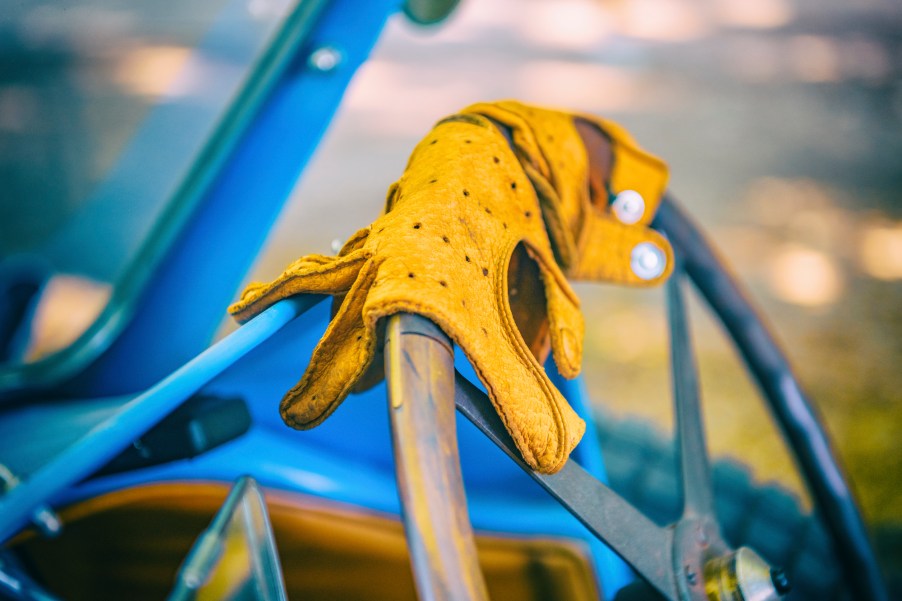
Should You Wear Driving Gloves?
Sometimes cars are simply a means of transport. But sometimes they’re entertainment. You can add to the enjoyment by outfitting your vehicle or even yourself with accessories. For instance, driving gloves can add an air of vintage luxury. But they also have an interesting history. At one time, they were less a fashion statement and more practical tools.
Here’s a look at why people began wearing driving gloves and what they’re used for today.
A brief history of driving gloves
Driving gloves have been around since cars were invented. In a vehicle without a roof or a windshield, the driver wore plenty of protective clothing. That included a long duster coat, goggles, a cap, a scarf, and gloves, Car and Driver explains. Gloves helped protect the hands while cranking the car to start it and while holding the wooden steering wheel that didn’t yet have power steering, The News Wheel reports. They played a protective role like motorcycle gloves today.
Driving gloves were initially a thick leather gauntlet style for tucking coat sleeves to protect against rain, cold, and insects. Their ubiquity led to the introduction of the glovebox. The first modern-style glove compartment likely appeared in the 1915 Pierce-Arrow, Car and Driver reports.
By the 1920s, cars had gained roofs and windows, and by the 1930s, they also had heaters. With less need for sturdy gloves, they evolved into thinner, unlined varieties. This style also gave the driver a better feel for the road, and it also became more of a fashion statement.
The modern driving glove arrived after news footage from May 1950 showed drivers at the first Formula 1 world championship race at Silverstone waving to the cameras while wearing gloves. These accessories gave racers a better grip of the wood or hard plastic steering wheels, while the thin leather still gave them a great feel for the drive. The gloves were usually perforated to let air circulate, cooling drivers’ hands.
With the popularity of the sports car in America in the 1950s and ’60s, sports-car lifestyle accessories became popular, too, including driving gloves. Companies advertised their wares in car-enthusiast magazines. Made from fine leathers, they were available for men and women.
The benefits of wearing driving gloves
Today, steering wheels are already covered with grippy materials, including leather and soft plastics. That makes driving gloves unnecessary for most people. And because they’re no longer needed, it gives them a luxury retro vibe. The association between driving gloves and sports cars endures, whether cruising in a classic or a new ride.
Still a practical accessory in older cars, they protect the hands and shield a car’s interior from oil and dirt. For precision driving, today’s gloves still improve grip on the steering wheel and gear shifter. For other drivers, they can provide a feeling of luxury and a connection to automotive history.
Styles to consider
Driving gloves are still made of fine leather or synthetic materials and are generally unlined. If you’re interested in joining the ranks of drivers wearing them, here are a few to consider:
- Autodromo Stringback leather
- Polo Ralph Lauren quilted leather
- Riparo Motorsports leather
- Forzieri women’s red perforated Italian leather
- Stompers Gloves Streamline women’s deerskin
With soft leather on your hands, you’ll be able to feel as though you’re driving with the top down, the sun on your face, and the wind in your hair. But wearing driving gloves today is usually a fashion choice unless you’re piloting a vintage or antique vehicle.


